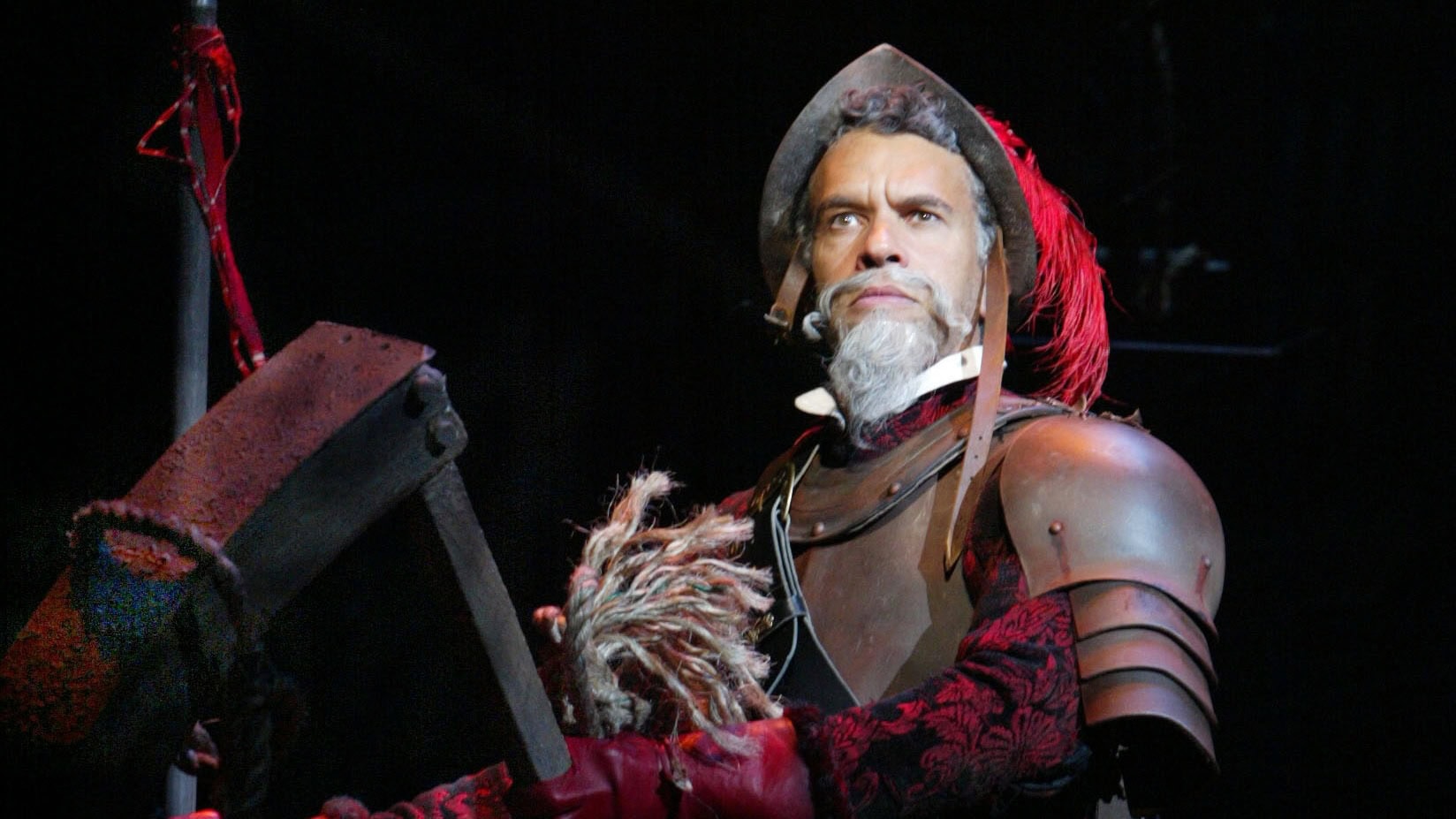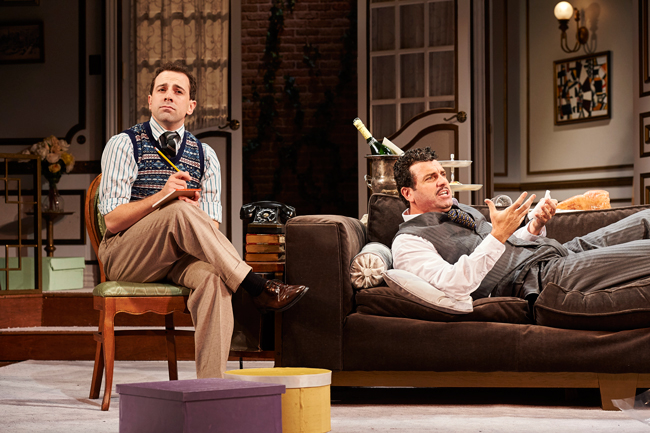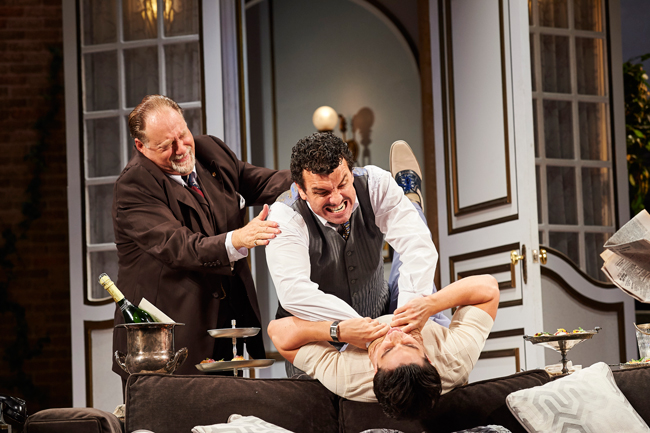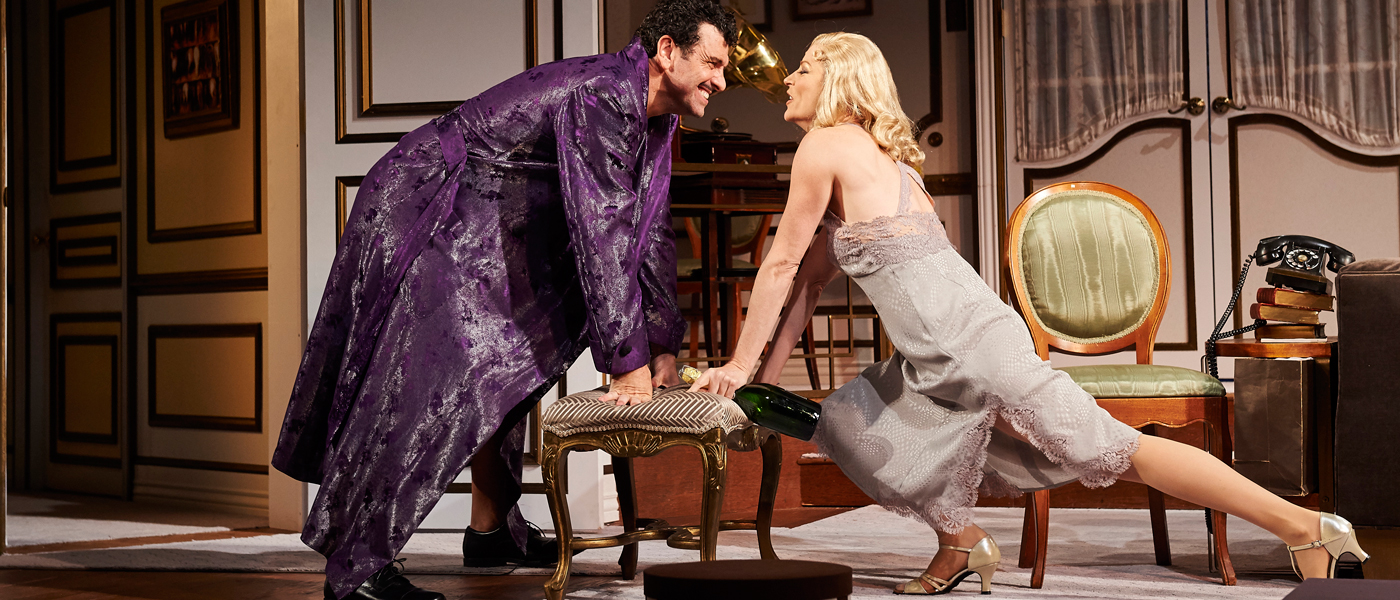
Not long ago, I wrote a companion piece to my 1989 comedy Lend Me A Tenor and called it A Comedy of Tenors, and it recently received its world premiere in a co-production of the McCarter Theatre and the Cleveland Play House.
I have referred to the new play elsewhere as a “sequel,” but I have to confess, I’m not fond of the word. In fact, the new play has turned out to be totally independent of the first, and the theater-goer does not need to know anything at all about Lend Me A Tenor in order to enjoy A Comedy of Tenors. They are their own plays set in their own worlds, and each play stands on its own.
Why then write a play at all using characters from the earlier play? I suppose because, over the years, I’ve become rather partial to the band of loonies in Lend Me A Tenor and I thought it might be fun revisiting them lo these many years later. It has, in fact, proved to be a complete joy.
I never dreamed of writing the second play until four years ago when Lend Me A Tenor had a Broadway revival. As I sat in the audience, I could see how much the people around me enjoyed being in the company of my old friends from the Cleveland Grand Opera Company, and I was reminded how much I liked them myself. Then one night I had a thought:
“What if I wrote a play about these characters two years after the end of Lend Me A Tenor? Where would Max – dogsbody and aspiring opera star – be? Would he be singing for a living? Would Max and his girlfriend Maggie be married? What about the world famous opera star Tito Merelli and his wildcat wife Maria? Would they still be together?”
Rob McClure (Max) and Bradley Dean (Tito). Credit: Roger Mastroianni.
Typically, when I get an idea for a new play, I start thinking about how other playwrights have handled the same theme. In this case, I started thinking about the whole concept of a companion piece. Were there any really good ones back there in the history of drama?
Many of my favorite plays bear the distinctive marks of their comic creators. For example, Sheridan’s 18th century The School for Scandal is clearly a kissing cousin of his early comic masterpiece The Rivals; but none of my favorite comedies fit the sequel category. The Merry Wives of Windsor? It contains several of the characters in Henry IV, Parts 1 & 2, but it’s really more about Falstaff in love than a continuation of the histories.
In a way, the dearth of sequels in the theater is rather surprising. The urge to see our favorite characters for a second or third time is a natural one, and we see this urge satisfied time and again in movies, television and books. In the 1930s, the movie The Thin Man was an instant hit, and it was followed immediately by five more films about the same mystery-solving socialites. In television it’s a commonplace. How many millions of us have loved following the Dowager Countess played by Maggie Smith in Downton Abbey over the years? Almost all of television is made up of sequels in this sense – they call ‘em episodes. And don’t forget all the books that have the same nucleus of characters, from Ian Fleming’s James Bond thrillers to the Jeeves and Wooster series by P.G. Wodehouse. As Bertie Wooster would say, “Still with me? Right ho!”
So: loads of series and sequels and companion pieces in other art forms, almost none in the theatre. But there is one whopping exception and it was written by the stunningly-named Pierre-Augustin Caron de Beaumarchais. Beaumarchais wrote The Barber of Seville in 1773, then a few years later he wrote The Marriage of Figaro using four of the major characters from the earlier play and setting it three years later in time. Both plays are masterpieces, and they were both made into the best comic operas this side of paradise.
What’s really interesting is that while The Marriage of Figaro is just as hilarious as Barber, it has a whole different tone. It asks some serious questions about marriage and politics, and it brings the lives of its characters full circle. These two plays encouraged me to forge ahead, and to try it in a similar way.
In writing A Comedy of Tenors, I started thinking about my life as a writer and how artists can have a hard time balancing the conflict between art and life. I have two monstrous things called children, a girl and a boy, and there are times when I’m in production for a new play, a continent away, sitting in a theater for days at a time, when I wonder how badly I’m short-changing the little creatures. This question set off a few bells as I scribbled my way through A Comedy of Tenors.
In the play, superstar Tito Merelli has been married for 25 years, all the while spending weeks at a time performing on the road. How does his wildly demonstrative wife Maria put up with it? And how has it affected his glamorous young actress daughter Mimi? Will Mimi end up marrying a fellow artist herself? And if so, will that put her in conflict with her artist father? Exploring these characters a bit more deeply this time around, while keeping them buoyant and funny (Oh Lord, I hope so) felt exactly like the right place to be.
It was clear to me from the minute I put pen to paper (and I really do use a pen and paper) that I wanted the form of the play to be a traditional farce. This was the form I used in Lend Me A Tenor and it felt equally appropriate here since I was still dealing with extravagant characters in a glamorous setting.
I was very aware that by choosing a specific theatrical form, I was setting up certain expectations, and I welcomed them. When you write a farce, you play by certain rules, one of which is to keep the plot as light as air while delivering as much wit and wisdom along the way as you can muster. In a tragedy of the Shakespearean variety, someone noble dies at the end. That’s the convention; it’s not debatable. In a traditional farce, it is equally non-debatable that there will be mistaken identity, romantic couples (usually two or three), a sense of buoyant sexiness, and loads of word-play.
I have seen farce criticized for being “lowbrow,” but of course that’s missing the point entirely. The great Shakespearean critic Northrop Frye likens the situation to that of a doctor friend who saw Twelfth Night and couldn’t bear it because he knew that it was biologically impossible for boy-girl twins to be identical. Frye’s response is that you simply have to accept Shakespeare’s conventions at face value in order to enjoy the plays. There is no in-between.
Ron Orbach (Saunders), Bradley Dean (Tito), and Bobby Conte Thornton (Carlo). Credit: Roger Mastroianni.
My own favorite authors in the world of farce include the late-19th Century Frenchman Georges Feydeau, whose masterpieces include A Flea in her Ear and The Lady from Maxim’s; his slightly older near-contemporary, Eugene Labiche, who famously wrote The Italian Straw Hat, Pots of Money and dozens of other plays; the aforementioned genius Beaumarchais and his Figaro plays; Sir Arthur Wing Pinero, the first playwright in history to be knighted and the author of The Magistrate and Dandy Dick; and Ben Travers, who wrote a series of farces for the Whitehall Theatre in London in the early 20th century.
If I expand this list to include comedies with farcical moments in them, I would then be adding my favorite comedies of all time: Shakespeare’s Midsummer, Taming of the Shrew, Much Ado, Twelfth Night and As You Like It; Oliver Goldsmith’s She Stoops to Conquer; Sheridan’s The Rivals and The School for Scandal; John O’Keeffe’s Wild Oats; Oscar Wilde’s The Importance of Being Earnest; Bernard Shaw’s Arms and the Man; Noel Coward’s Private Lives; and Kaufman and Hart’s The Man Who Came to Dinner.
As I applied these thoughts and recollections to A Comedy of Tenors, the immediate question was the plot. (Farces are relentlessly plot-driven.) In this case, the plot came surprisingly quickly, partly because I based it on an historical event:
In 1990, a music producer came up with a pretty wild idea. He would stage a charity concert starring the three greatest tenors in the world – Luciano Pavarotti, Placido Domingo and José Carreras – and he would present it at the Baths of Caracalla in Rome on the eve of the World Cup soccer finals. He called it “The Three Tenors,” and it turned out to be the classical concert of the century. To this day, the album is the best-selling classical album of all time, and the follow-up concert (the sequel, if you will) was watched by over 1.3 billion viewers on international television.
So my premise was this: Henry Saunders, the wily producer of the Cleveland Grand Opera Company from Lend Me A Tenor, has come up with the same idea, only fifty years earlier, in 1936. He’s staging a concert in Paris called “The Three Tenors” starring Max, Tito and Jussi Björling – and he’s doing it at a soccer stadium which happens to be located next to one of the finest hotels in Paris, where the action of the play unfolds.
After that, the plot was simplicity itself: Tito is having a mid-life crisis. Max and Maggie are having a baby. The famous Russian soprano Tatiana Racón, who is Tito’s former lover, is visiting Paris. Tito and Maria’s daughter, Mimi, is also in town with her own lover. And everything that possibly could go wrong does go wrong.
The writing of A Comedy of Tenors has turned out to be more fulfilling than I’d ever imagined. I thought I had said goodbye to the characters in Lend Me A Tenor when the play first opened on Broadway so many years ago, but A Comedy of Tenors has not only been a joy to write and produce from beginning to end, it has also allowed me to spend time once again with some of the best friends I ever created.
Photo: Cleveland Playhouse’s production of Comedy of Tenors in September 2015.
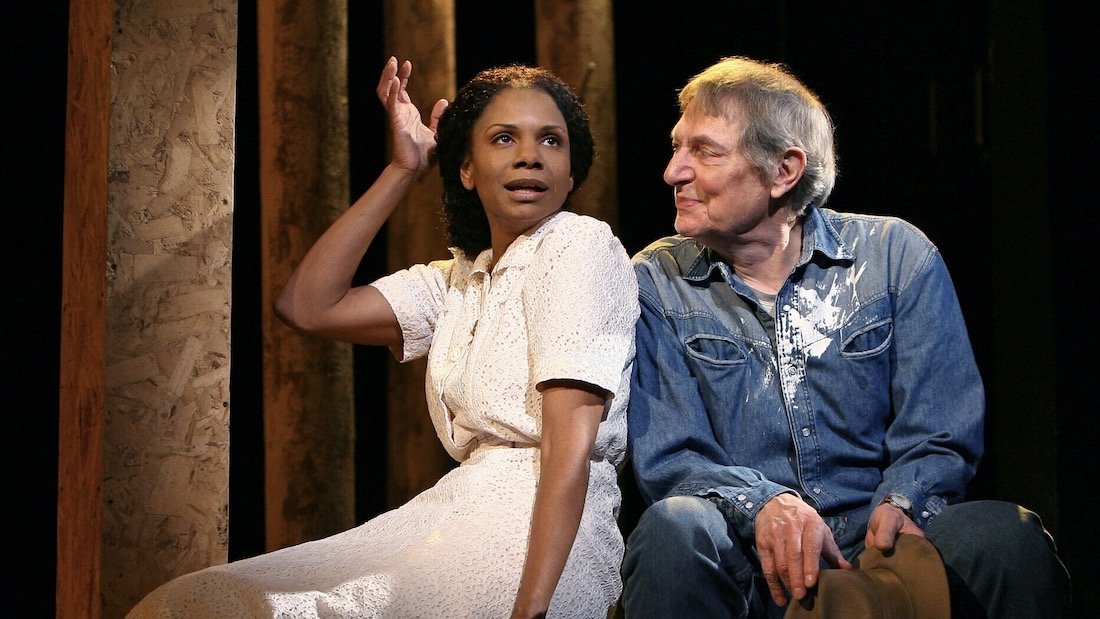
Plays that Inspired Musicals

QUIZ: Which Character from The Lightning Thief Are You?
